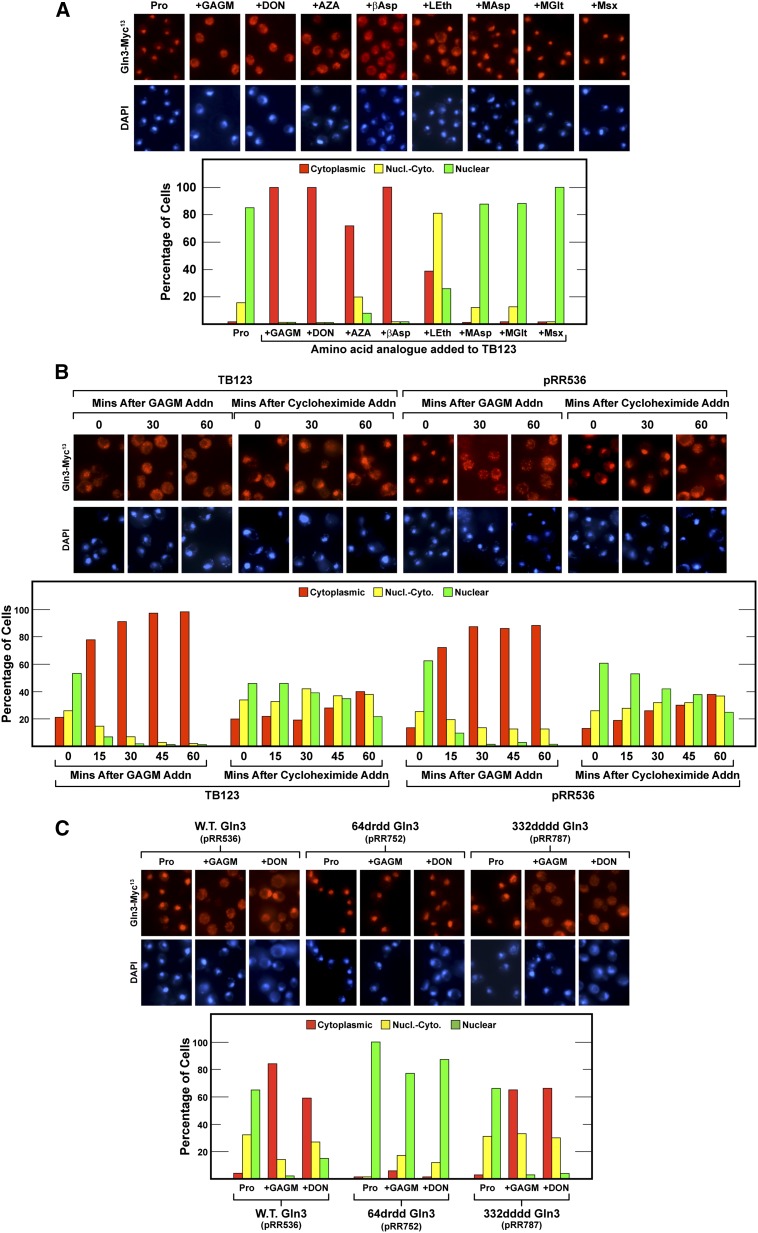Figure 12.
(A) Glutamine analogues elicit the export of wild-type Gln3-Myc13 from the nuclei of proline-grown cells, a growth condition in which normally Gln3-Myc13 is highly nuclear. Wild-type TB123 cells were grown to mid-log phase in YNB-proline medium and sampled for Gln3-Myc13 localization. GAGM, DON, AZA, βAsp, LEth, MAsp, MGlt, or Msx was added and the cells incubated for 30 min before being sampled again for the assay of Gln3-Myc13 localization. (B) GAGM elicits nuclear Gln3-Myc13 export much more rapidly than cycloheximide. Wild-type TB123 and transformants (JK9-3da, containing wild-type GLN3 plasmid pRR536) were grown as described in A. The cultures were sampled and then either 2 mM GAGM or 200 μg/ml cycloheximide was added. Thereafter, the cultures were sampled as indicated for 60 min, and the intracellular distribution of Gln3-Myc13 was determined as described in Figure 1, C–E. (C) Glutamine analogues GAGM and DON elicit nuclear export of wild-type Gln3-Myc13 (pRR536), 332dddd Gln3-Myc13 (pRR787), but not 64drdd Gln3-Myc13 (pRR752). The experimental format and assay of Gln3-Myc13 localization were the same as in Figure 12A except that transformants (JK9-3da) containing the wild-type and mutant plasmids were used in place of wild-type strain TB123.

